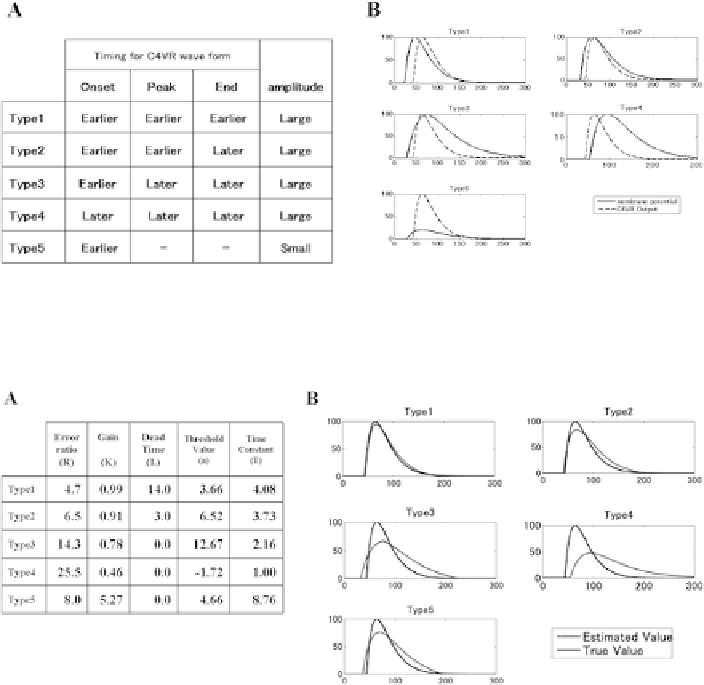Information Technology Reference
In-Depth Information
Fig. 12.3: Types of activity patterns for C4VR output.
a
: Characteristics of the res-
piratory related activities of imaging data.
b
: Artificial signals of imaging data for
C4VR output.
Fig. 12.4: Model parameters and estimation results for artificial data.
a
: Table of
the estimation error standard deviation and the model parameters.
b
: Comparison
between the estimation values and the true values.
We then applied STF model to artificially composed time series data that exem-
plifies each activation patterns. Figure 12.4a shows parameter values and the esti-
mation error ratio for each category datum and Fig. 12.4b indicates the comparison
between the estimated and the actual values for each category data. The estimation
error is small when we estimate the respiratory motor activity using Type-1, Type-2,
or Type-5 pixels, whereas it becomes bigger when we estimate it using Type-3 or
Type-4 pixels. The dead time
L
of Type-1 pixel is large, and the gain
K
of Type-5
pixel is large. The results suggest that respiratory related pixels can be characterized
by applying the STF model to optical time series data in each pixel. The conven-
tional cross-correlation technique can only discriminate Type-1 from other activity
patterns based on the maximum lag. Therefore, the present model provides a more
sophisticated method to characterize dynamics of respiratory related optical signals.

